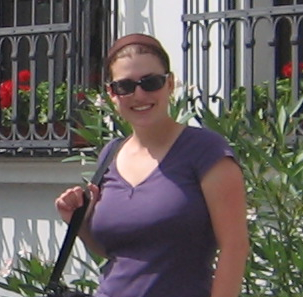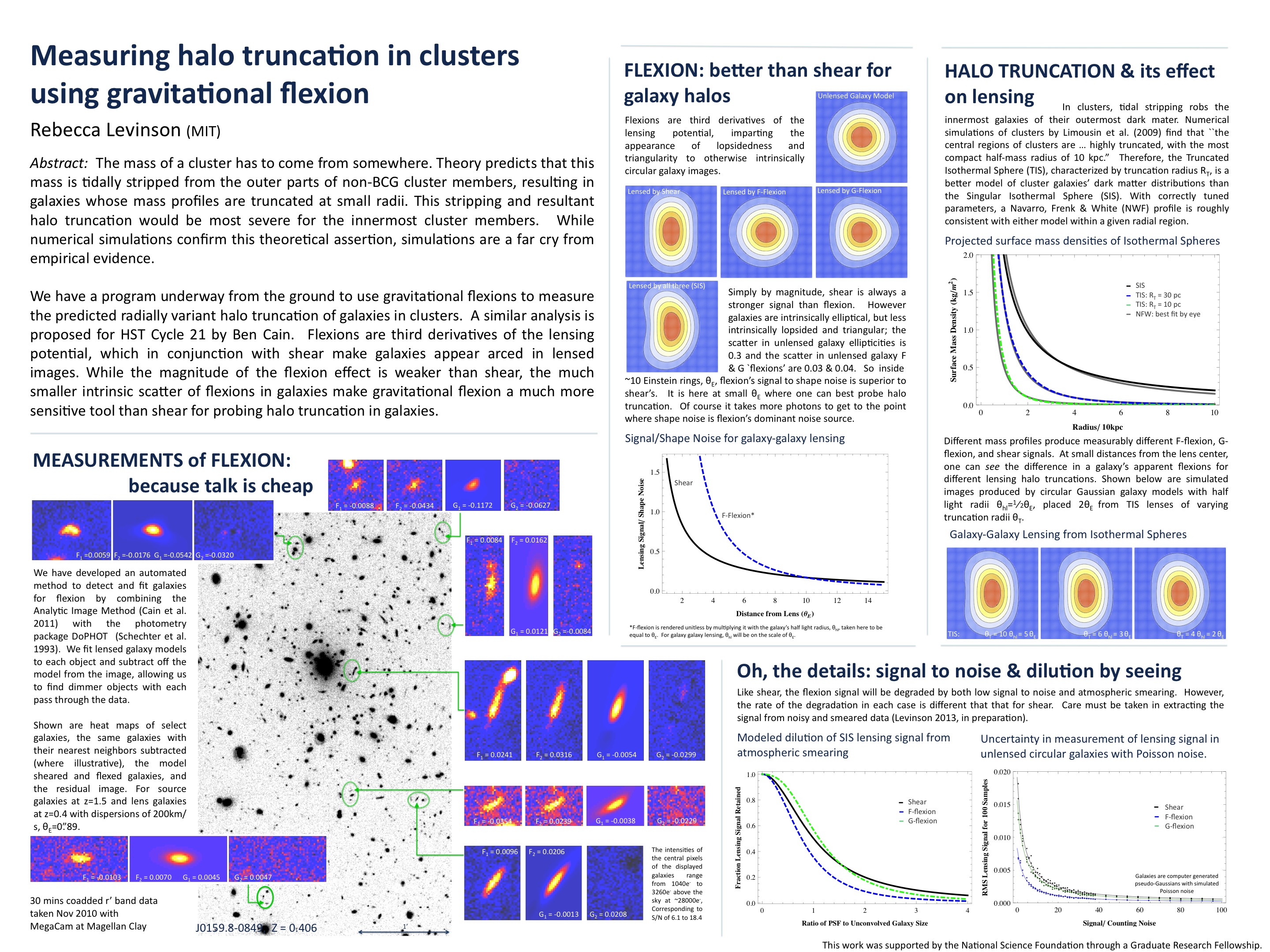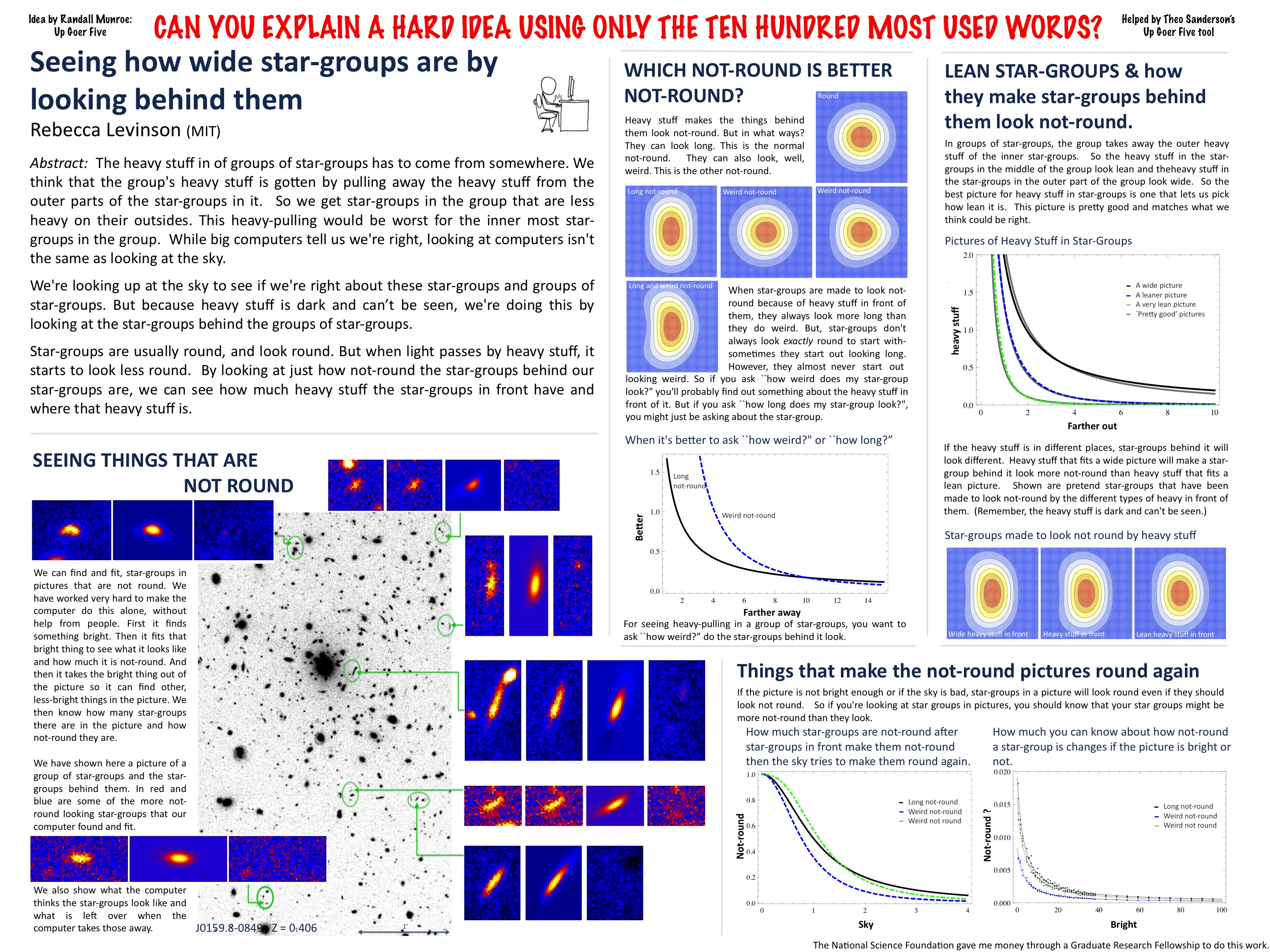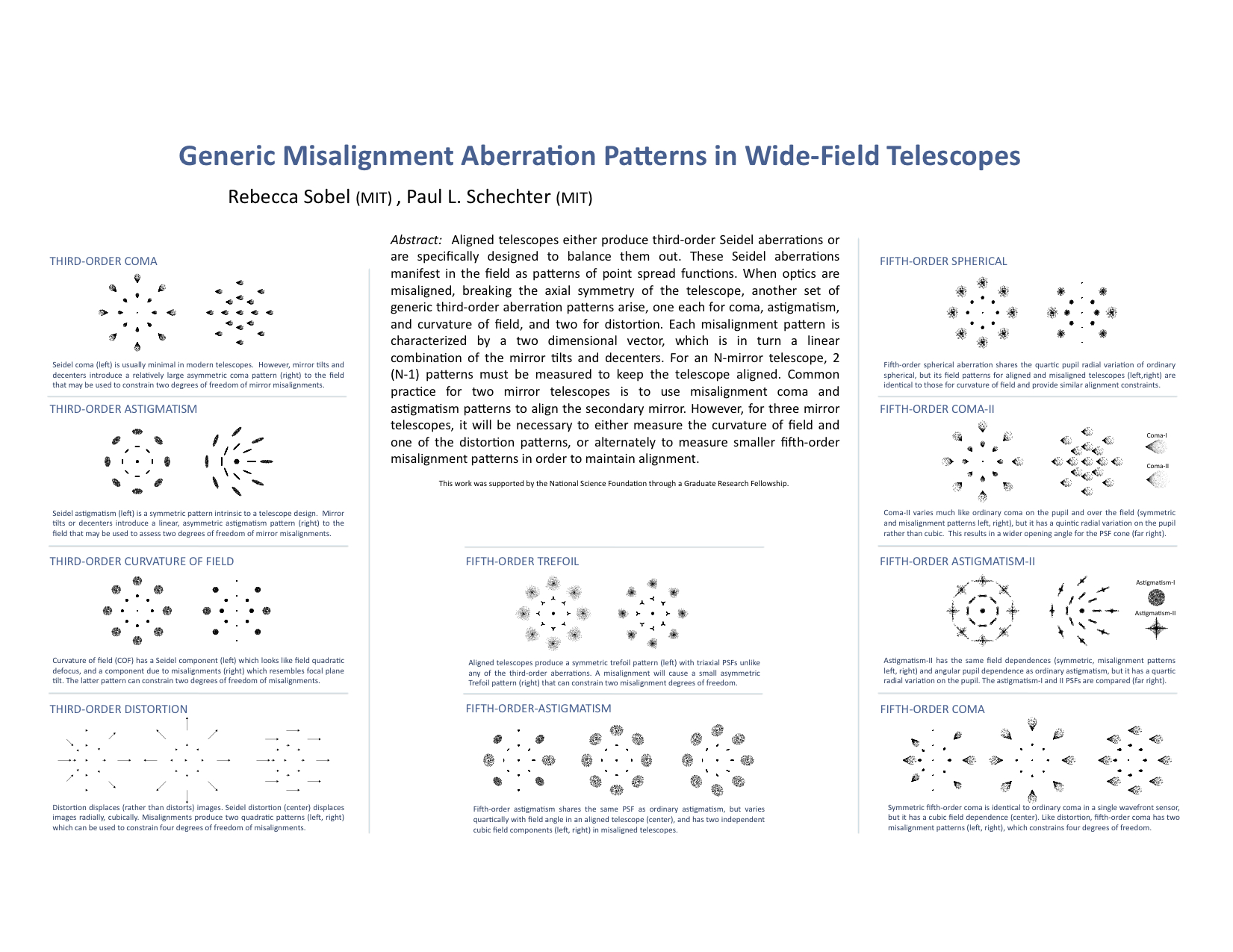
Rebecca Levinson
I am a sixth year graduate student at MIT. I am working with
Paul Schechter on weak gravitational lensing in galaxy clusters and
formerly telescope aberrations. This means that day to day, I create,
implement in code, and fine-tune analytic models in order to better
describe physical phenomena such as the deflecions of light due to
gravitational lenses or telescope optics. I curve fit, to test models
against real data. Most of my time is spent at a computer, but some of
it is spent at a telescope, collecting data.
Research
Gravitational Flexion
My gravitational flexion work is ongoing. I am primarily concerned
with measuring halo truncation of galaxies in galaxy clusters.
- For those unfamiliar with the lingo, this means that I am
trying to see how the dark matter (invisible mass) of galaxies
in groups changes depending on where the galaxies are in the
groups. We expect the innermost galaxies to be skinnier because
their mass is stolen away.
- For those who speak jive, I am using galaxy-galaxy lensing to
measure halo truncation for galaxies within clusters. We expect
tidal stripping to leave the innermost galaxies with narrower
dark matter profiles than the outermost galaxies.
I observe at the Magellan telescopes using MegaCam. My primary lensing
tool is gravitational flexion, which produces an apparent bending in
lensed galaxy images. This bending (a combination of induced
lopsidedness and triangularity), is detectable further away from lensing
masses than the strong lensing signal. And while flexion is a more
subtle effect than shear (the image stretching due to gravitational
mass), galaxies are usually innately unflexed whereas they are often
physically elliptical. Therefore flexion can be a less noisy signal
than shear for measuring halo truncation.
The following two posters explain my work in slightly more detail.
They are identical, except one used only the 'ten hundred' most common
words in the English language. Feel free to click to view in more
detail.


Optics
My optics work is detailed in
Generic Misalignment Aberration Patterns in Wide Field Telescopes ,
and in the shorter paper the
Generic Misalignment Aberration Patterns and the Subspace of Benign
Misalignment . However the very short version is
effectively this poster below.

DoPHOT in C
If you're into photometry, or just want a nice, stand-alone program to
find and fit objects in your minimally cleaned fits images, check out
DoPHOT . I rewrote
in C and added some upgrades to
Schechter,
Mateo, and Saha 's 1990's curvefitting photometry program. It
iteratively finds, fits to a PseudoGaussian (or function of your
choosing), and subtracts objects from images, allowing for automated
photometry and neighbor subtraction in fields.



